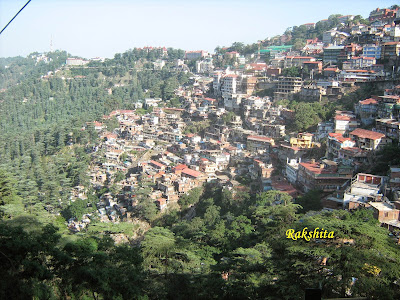India is very beautiful country. Its culture, its places, its people everything is so beautiful.
India offers its foggy hill stations, captivating beaches, historical monuments, golden deserts, serene backwaters, pilgrimage sites, rich wildlife, and colorful fairs to its travelers which capture the heart of every tourist.
Here I am listing the 5
amazing-beautiful travel destinations in India as per my experience.
1. Kerala
Kerala in South India also called "Gods own country', totally fulfills this title. Very beautiful, very peaceful place. Full of greenery. Kerala is the most literate state in India.
Known for its backwaters, mountains, coconuts, spices and dance form like Kathakali.
If anyone is planning to go Kerala, don't forget to eat their traditional food called as 'sadhya' and must stay in houseboats in backwaters.
Munnar, Thiruvananthapuram, Allepy backwaters, Coachi are great places of Kerala.
 |
| Allepy backwaters |
2. Tamilnadu
Tamilnadu also called as 'Temple state of India'.
Tamilnadu is combo of historic culture and contemporary attraction, that gives a totally new refreshing travel experience. With Tamilnadu tourism also get to know more about the popular dance form like Bharat Natyam which talks a lot about the Tamilnadu culture. The longest Marina Beach, Kanyakumari beach, Rameshwaram beach awaits the beach seekers to enjoy memorable beach vacations here.
Chennai, Madurai, Vellore, Kanyakumari, Rameshwaram are the amazing places of Tamilnadu. Ooty is very beautiful hill-station. You can use toy train to go there.Very interesting experience to travel in toy train.
Also Tamilnadu have some amazing waterfalls like Hogenakal Waterfall.
 |
| Vivekananda Rock Memorial, Kanyakumari |
3. Karnataka
Karnataka is a tapestry of colours, cultures, flavours, landscapes, timelessness and heart stopping beauty. It’s a place where vibrant worlds seamlessly meld into one another every few hundred kilometers.
The waterfalls of Karnataka and Kudremukh are listed as must-see places and among the "1001 Natural Wonders of the World".
Jog Falls is India's tallest single-tiered waterfall. Gokak Falls, Unchalli Falls, Magod Falls, Abbey Falls, Shivanasamudra Falls among other popular waterfalls.
Mysoe, banglore,
Shimoga, Manglore are main travel cities of Karnataka.
Sagara town is very famous with its local attraction.
For more information click..
 |
| Jog falls, near Sagara |
4. Kashmir
Kashmir is the place which is very beautiful, Delightful, Unforgettable. A place where anyone can lost in its beauty.
Ride in 'shikara' the local boats in Dal lake is awesome, the experience to see night market and staying in boat-house in Dal lake is unforgettable. Everyone should experience this.
Shrinagar,Pahalgam, Gulmarg, Sonamarg, Patnitop are the main beautiful attractions of Kashmir.
Kashmiri drink called as 'Kahva' is very tasty drink.
 |
| Kashmiri art shop |
 |
| House boats in Dal lake |
5. Rajasthan
Rajasthan is one of the most popular travel destination in India. Every third foreign tourist visiting India also travel to Rajasthan, known for its palaces, forts, desert, camels, elephants, twirled mustaches, colorful culture, festivals.
The palaces of Jaipur, lakes of Udaipur, and desert forts of Jodhpur, Bikaner & Jaisalmer are among the most preferred destinations of many tourists, Indian and foreigners.
Jaipur, Udaipur, Jodhpur, Jaisalmer, Bikaner are the most visited cities of India.
Dal-Baati-Churma is the main dish of Rajasthan, which is very delicious.
 |
| Jalmahal- Jaipur |












